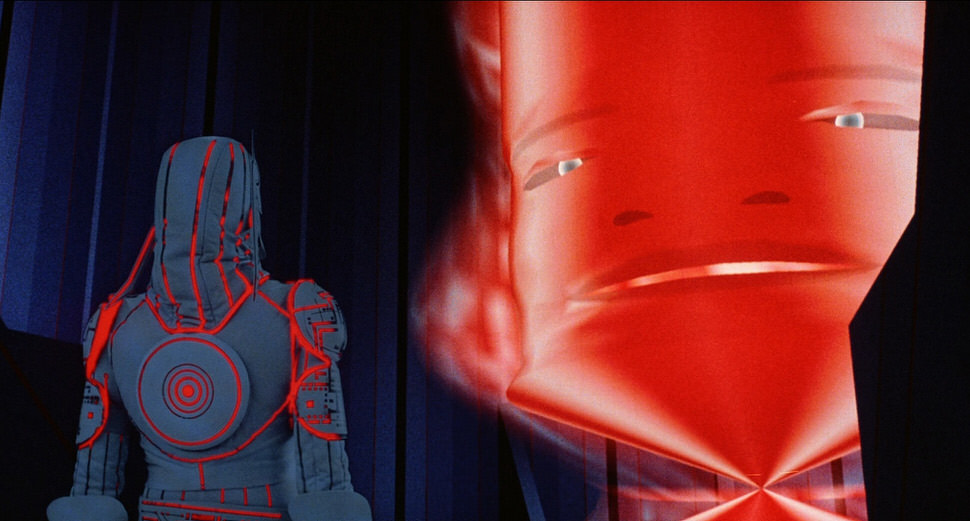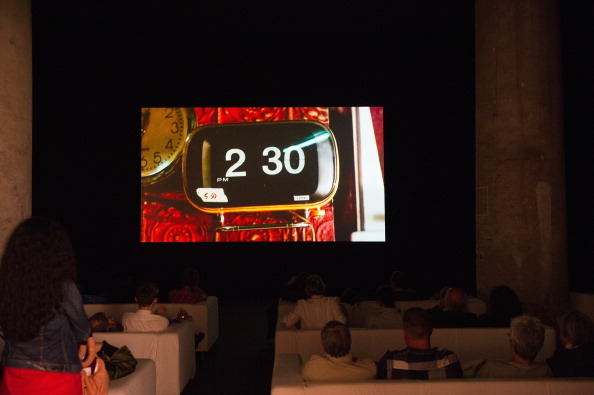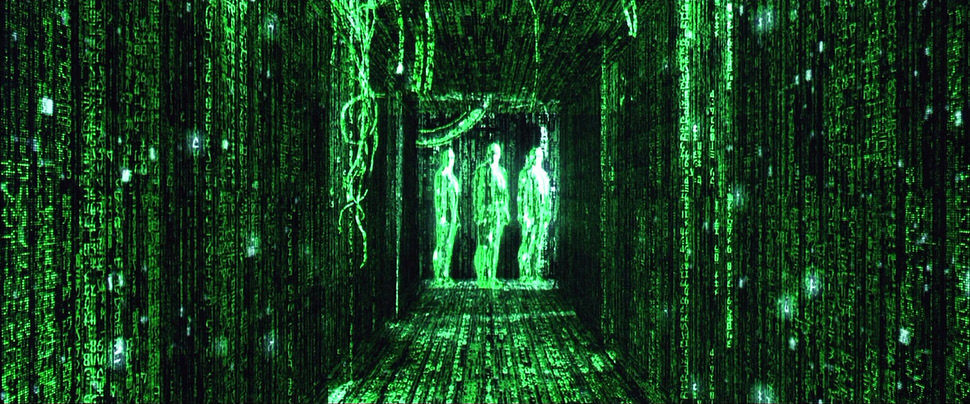Can we speak of a twenty-first-century cinema? And if so, on what basis?
In the immediate aftermath of World War II, the French film critic André Bazin characterized cinema as an idealistic phenomenon and cinema-making as an intrinsically irrational enterprise. “There was not a single inventor who did not try to combine sound and relief with animation of the image,” Bazin maintained in “The Myth of Total Cinema.” Each and every new technological development—synchronous sound, full-color, stereoscopic or 3-D movies, Smell-O-Vision—served to take the cinema nearer to its imagined essence, which is to say that “cinema has not yet been invented!” Moreover, once true cinema was achieved, the medium itself would disappear—just like the state under true communism. Writing in 1946, Bazin believed that this could happen by 2000.
In fact, something else occurred: the development of digital computer-generated imagery (CGI). Bazin had imagined cinema as the objective “recreation of the world.” Yet digital image-making precludes the necessity of having the world, or even a really existing subject, before the camera—let alone the need for a camera. Photography had been superseded, if not the desire to produce images that moved. Chaplin was perhaps but a footnote to Mickey Mouse; what were The Birth of a Nation and Battleship Potemkin compared to Toy Story 3?
The history of motion pictures was now, in effect, the history of animation. The process began in the early 1980s with two expensive and much-publicized Hollywood features. One From the Heart (1982), Francis Ford Coppola’s experiment in electronic image-making, returned but $1 million on a $26-million investment and effectively destroyed his studio, while Disney’s Tron (1982) the first sustained exercise in computer-generated imagery, was a movie whose costly special effects and mediocre box-office returns would be credited with (or blamed for) delaying CGI-based cinema for a decade.
Tron’s literalist representation of cyberspace predated William Gibson’s Neuromancer by several years, although the movie was actually closer to Alice in Wonderland or The Wizard of Oz in supposedly taking place inside a computer where all the characters, except the hacker Flynn (Jeff Bridges), were—in a longstanding Disney tradition—anthropomorphized images, in this case, computer code. As such, Tron might be considered a founding example of cyborg cinema, combining digital and photographic imagery. The movie’s most dramatic effect was the virtual tracking shot, in which a non-existent camera seemed to move through an imaginary landscape.
More advanced and popular cyborgs, Steven Spielberg’s Jurassic Park (1993) and George Lucas’s The Phantom Menace (1999), seamlessly fused photography and CGI imagery to have real people interact convincingly onscreen with non-existent creatures. Both films also engaged in a particular form of naturalization by inscribing CGI into prehistory, whether that of planet Earth or of the Star Wars saga. In his 2001 book, The Language of New Media, Lev Manovich made the provocative observation that the aesthetic underlying Jurassic Park is akin to Socialist Realism, which strove to project the radiant future socialist society into the familiar world of the present. Jurassic Park strives “to show the future of sight itself.”
Just as Socialist Realist paintings blended the perfect future with imperfect reality, Jurassic Park blends the future supervision of computer graphics with the familiar vision of the film image … The dinosaurs are present to tell us that computer images belong safely to a past long gone—even though we have every reason to believe that they are messengers from a future still to come.
The Phantom Menace, which was also projected digitally in some theaters, not only evoked but embodied the future of cinema. So, in another way, did Douglas Gordon’s 1993 video installation, 24 Hour Psycho—in which, wrenched from its natural context and re-presented as a reanimated (or perhaps, de-animated), glacially slow-motion digital image of itself, requiring a full day to watch, Hitchcock’s old-fashioned analog motion picture became an extreme object of contemplation. A cyborg production like 24 Hour Psycho further induces what some experience as a loss of temporal indexicality. It has often been observed that, with its absence of flicker and greater sense of continuity, the video image seems eternally “present.”
What then is one to make of Christian Marclay’s 2010 installation The Clock, a digitally-projected assemblage of photographic motion pictures that, in its perfectly chronological, minute-to-minute temporal references, functions as a twenty-four-hour timekeeper? (The Clock’s thousands of clips include everything from High Noon and Easy Rider to Back to the Future and Pulp Fiction. No list can possibly do it justice.) As it held audiences in London, New York, Los Angeles, and elsewhere spellbound and hyper-aware of time passing , The Clock demonstrated Tarkovsky’s assertion—albeit in a vulgar sense—that “Time, printed in its factual forms and manifestations,” was “the supreme idea of cinema as an art.”
Advertisement
Although the suspense inherent in many of the original clips undoubtedly contributed to The Clock’s power to fascinate the spectator, one might also observe that the heightened awareness of time, as well as The Clock’s utilitarian capacity to tell time in real time, provided a new sort of indexicality: The experience of watching a movie is forcibly literalized as the experience of watching a movie and this is further emphasized by the presence of so much familiar material. For many, much of The Clock is pre-saturated in personal memory or nostalgia.
It may be argued that, as fashioned from pre-existing, often well-known movie and television clips and thus employing many beloved stars, The Clock was in fact a traditional motion picture or, at the very least, a celebration of motion pictures and their undying appeal. (It was praised by several New York art critics specifically for its presumed love for movies.) Nevertheless this epic projection was, of course, digital, and—like 24 Hour Psycho or other Gordon installations—only possible as a form of digital image-making. The Clock’s occasional cropping and stretching of the original material is a factor of the high-definition video format, which demands a 16:9 aspect ratio. (Marclay employed further digital manipulation in making The Clock, sweetening some footage by removing voiceovers that implied a past tense, eliminating overly emphatic music, and creating new sound effects where necessary.)
In short, whether as a source of visual data or as a delivery system, computer-generated imagery has introduced a radical impurity into a motion picture apparatus that, save for the introduction of synchronous sound, remained markedly consistent for a hundred years. Thus, The Matrix (1999), written and directed by the brothers Larry and Andy Wachowski, represents a landmark hybrid in its combination of live action with frame-by-frame digital manipulation. No previous animated film had so naturalistically represented the physical world. “Once you have seen a movie like The Matrix, you can’t unsee it,” a Los Angeles exhibitor told the New York Times in 2002, referring to the ways in which CGI had altered the action film, in part by allowing serious actors to perform impossible stunts. The Matrix, as film critic David Edelstein would note the following year, “changed not only the way we look at movies but movies themselves.” The Matrix “cut us loose from the laws of physics in ways that no live-action film had ever done, exploding our ideas of time and space on screen.”
In addition to vaulting the gap between photographed humans and computer-generated humanoids known as the “uncanny valley,” The Matrix provided an irresistible ruling metaphor that was heightened in its force by the approaching millennium—humanity lives in simulation, in a computer-generated illusion created to conceal the terrifying Desert of the Real. “There’s something wrong with the world, but you don’t know what it is,” the most informed character told the movie’s computer-nerd protagonist.
As with Tron, the hacker was the hero but, to a far more sophisticated degree, cyberspace was the place. Despite its fantastic premise, The Matrix evoked and identified a recognizable world—a new social reality in which freedom and social control had merged, while information, entertainment, fantasy, advertising, and communication seemed indistinguishable. This was reinforced by the movie’s incidental social realism—the narrative was not just dependent on computers but cell phones and instant messages. The Matrix further benefited from and made use of DVD technology which, introduced in 1996, came into its own as a consumer product in the late 1990s (and soon began to provide the movie industry’s margin of profit), not least because of the extras the new format permitted, including com-mentary and self-promoting production documentaries. In August 2000, Time Warner announced that a record-setting 3 million Matrix DVDs had been sold.
Released at the height of the dot-com bubble, during a period in which computers saturated the home entertainment market in the manner that television did in the 1950s, The Matrix was an idea whose time had clearly come. In January 2000, less than a year after the movie’s release, Time Warner—the world’s largest media conglomerate as well as the studio that produced The Matrix—merged with the world’s largest Internet-service provider, America Online (AOL), in a deal which involved the transfer of $182 billion in stocks and debts and was the largest in history.
Evoking “a prison that you cannot smell or taste or touch … a prison for your mind,” The Matrix premise invited allegory. For architecture critic Herbert Muschamp, the Matrix suggested “the monoculture of shopping malls, theme parks, edge cities, suburban subdivisions, convention centers and hotels.” It might also be AOL Time Warner or Hollywood or the National Entertainment State. The main thing is this: one cannot stand outside it. Thus, in the universe of The Matrix, Bazin’s dream arrived as a nightmare, in the form of a virtual cyber existence: Total Cinema as a total dissociation from reality.
Advertisement
This essay was adapted from the first two chapters of J. Hoberman’s new book, Film After Film (Or, What Became of 21st Century Cinema?), published by Verso Books.






